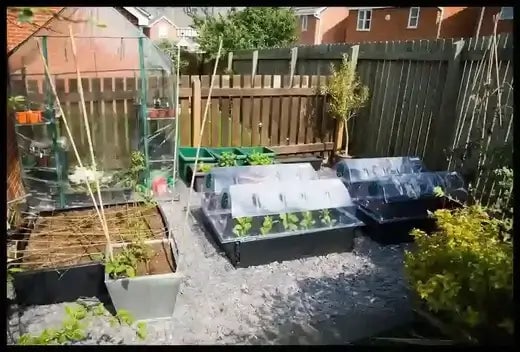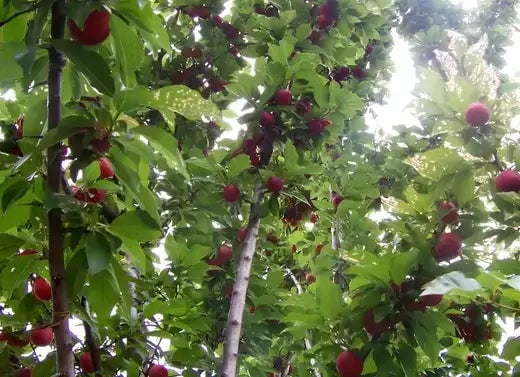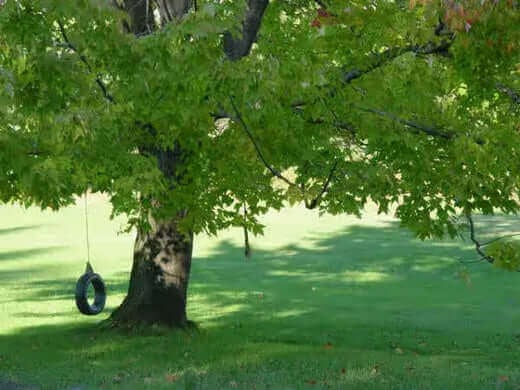10 Best Pleasing Trees for Shade to Enhance Your Outdoor Space
The beauty of a well-designed outdoor space lies in its harmonious balance between sunlight and shade. Shade-providing trees not only create a comfortable environment during hot summer days but also contribute to the landscape's aesthetic appeal. Whether you want to create a serene retreat or enhance your garden's visual allure, choosing the right shade of trees is essential. In this article, we'll explore the ten best pleasing trees for shade that can transform your outdoor area into a tranquil oasis.
Maple Trees (Acer spp.)
Maple trees are renowned for their vibrant foliage, which turns brilliant shades of red, orange, and yellow in the fall. Varieties such as the Sugar Maple (Acer saccharum) and Red Maple (Acer rubrum) provide ample shade while adding color to your landscape. Their dense canopies are excellent for cooling your outdoor space during warm months.
Oak Trees (Quercus spp.)
Oak trees are not only majestic in appearance but also great shade providers. With varieties like the Northern Red Oak (Quercus rubra) and Live Oak (Quercus virginiana), you can enjoy a stately canopy that offers respite from the sun's intensity. Oaks also support diverse ecosystems, attracting various wildlife species to your garden.
American Beech (Fagus grandifolia)
The American Beech is known for its lush green leaves that transition to golden bronze in autumn. It's an excellent choice for a large, shade-loving tree with a graceful presence. Its broad canopy offers substantial shade coverage, making it a favorite for many garden enthusiasts.
Birch Trees (Betula spp.)
Birch trees are celebrated for their distinctive white bark that provides visual interest year-round. Species like the River Birch (Betula nigra) and Paper Birch (Betula papyrifera) bring elegance and shade to your outdoor space. Their dappled shade allows filtered sunlight to pass through, creating a delightful play of light and shadow.
Eastern Redbud (Cercis canadensis)
The Eastern Redbud is a smaller tree that adds charm to any landscape. Its heart-shaped leaves emerge in spring with a purplish tint, turning green as the season progresses. This tree offers filtered shade, making it a great addition to smaller gardens or spaces where you want to balance light and shadow.
Tulip Tree (Liriodendron tulipifera)
The Tulip Tree boasts distinctive tulip-like flowers and vibrant green leaves. Its tall, straight trunk supports a canopy that casts ample shade. While it takes time to reach its full size, the Tulip Tree rewards patience with a commanding presence and cooling shade.
Japanese Zelkova (Zelkova serrata)
Ideal for urban environments, the Japanese Zelkova combines shade provision with a pleasing aesthetic. Its finely serrated leaves and elegant silhouette make it an attractive choice for modern landscapes. With its broad canopy, this tree offers excellent shade coverage, making it suitable for parks and spacious gardens.
London Plane Tree (Platanus × acerifolia)
The London Plane Tree is a hybrid species known for its ability to thrive in urban environments. Its mottled bark and large, hand-shaped leaves create a unique visual appeal. This tree's substantial canopy provides ample shade, making it a popular choice for city streets, plazas, and parks.
Sycamore Trees (Platanus occidentalis)
Sycamore trees are known for their distinctive peeling bark and large, palmate leaves. Their expansive canopy offers generous shade coverage, making them an excellent choice for more significant properties. Sycamores create a rustic and charming atmosphere, making them popular in rural and urban settings.
Black Walnut Is A Perfect Shade Tree
The Black Walnut tree is cherished for its shade, edible nuts, and valuable timber. Its compound leaves and distinctive nuts make it easily recognizable. While its shadow is not as dense as some other trees on this list, it still provides a pleasant environment for lounging beneath its branches.
Whether you're seeking a majestic canopy, dappled sunlight, or a mix of both, the ten trees listed above offer an array of options to suit your preferences and space constraints. By incorporating these pleasing shade trees into your landscape design, you can create a tranquil oasis that combines visual appeal with comfortable outdoor living. Remember to consider factors such as growth rate, size, and maintenance requirements when selecting, and enjoy the beauty and serenity these trees bring to your outdoor environment.
Nestled amidst nature's embrace, I envision the tranquil oasis as a harmonious blend of captivating visual allure and serene reprieve. As you enter this sanctuary, a gentle breeze carries the soothing scent of blooming flowers, inviting you to explore its picturesque beauty.
Lush foliage, meticulously curated, guides your gaze along winding pathways. Tall, graceful willows dip their fronds into a reflective pond, where koi fish glide beneath the shimmering surface. The sound of trickling water from a delicately designed fountain adds a musical rhythm to the air, a lullaby for the soul. Smooth pebbles in earthy hues create an enchanting mosaic, leading you toward secluded alcoves adorned with plump cushions, beckoning you to sit and absorb the serene ambiance.
Sunlight filters through the verdant canopy, dappling the ground with a gentle play of shadows. Soft, cool shades of green dominate the palette, evoking a sense of tranquility and renewal. Delicate butterflies and birds flit by, their graceful movements adding to the enchanting spectacle.
Blossoms of every hue burst forth in carefully curated patches, creating a symphony of colors dancing together perfectly. Roses, lavender, and jasmine release their delicate fragrances, infusing the air with a gentle, calming aroma. A delicate archway entwined with climbing vines presents a threshold to another oasis section, revealing a hidden sanctuary where yoga and meditation find their perfect haven.
At the heart of this oasis, a seating area carved from natural wood offers respite. Soft cushions adorned with intricate patterns of calming blues and soft whites beckon you to rest. A trellis overhead, decorated with fairy lights, creates an intimate canopy that glimmers as the sun dips below the horizon, transitioning the oasis into a realm of twilight magic.
Shade Trees Make A Tranquil Oasis
In this tranquil oasis, visual splendor intertwines with a serene ambiance, creating a haven of respite from the world's demands. It's a place where every element is meticulously crafted to soothe the senses and restore the spirit. This sanctuary invites you to linger, rejuvenate, and find solace in nature's embrace.
How to Find the Perfect Planting Spots for Shade Trees
The best investment for improving outdoor space involves planting shade trees. Shade trees help cool your home while turning outdoor spaces into peaceful retreats, increasing property value. Selecting proper planting areas for shade trees ensures their healthy development and helps avoid later issues. Through careful planning, you can identify ideal locations in your yard to enhance tree benefits and avoid potential problems with buildings and utility lines. The following guide explains ideal planting locations for shade trees, advice for planting success, and ongoing tree upkeep.
1. Observe and Analyze Your Property
Before selecting a planting location, thoroughly examine your property's terrain. Carefully inspect areas that receive maximum sunlight alongside water drainage patterns after rain and the presence of slopes or existing trees and structures. Consider:
Sun Patterns: Determine which sections of your yard receive the most intense afternoon sunlight because these locations will yield the highest benefit from planting a shade tree.
Wind Exposure: Wind exposure in certain regions can lead to soil dehydration and create stress for newly planted vegetation. When you live in a windy area, seek planting locations that provide natural protection against the typical wind direction.
Microclimates: Even within one yard, microclimates can occur. Proximity to structures tends to generate more heat, whereas low-lying areas accumulate cool, moist air. Understanding these variations makes matching tree species with specific microclimates possible.
Mapping these details lets you visualize the best planting locations and choose appropriate trees for each site.
2. Think About Shade Where It's Needed Most
People plant shade trees for various reasons, but most commonly, they seek to create protection against sunlight. Search your property for outdoor areas where adding a shaded canopy would be most beneficial.
Near South or West-Facing Walls: Planting trees in this location generates shade from the afternoon sun, decreasing indoor temperatures and cutting cooling expenses. Ensure the tree's mature canopy provides shade to your home while remaining sufficiently distant to prevent branches or roots from damaging its structure.
Outdoor Seating Areas: Planting a shade tree around the edge of your patio, deck, or porch helps alleviate summer heat discomfort in those outdoor spaces. The tree will naturally cool the space while establishing a pleasant green environment suitable for outdoor events.
Garden Beds or Lawns: Certain garden plants thrive under partial shade conditions, particularly beneficial for regions experiencing intense summer heat. Positioning a shade tree correctly will shield sensitive plants from sunscald and wilting, enabling you to support a healthy and diverse garden.
Focus on these target areas while imagining how the tree will grow throughout multiple years. A small tree species can develop into a wide shadow producer, so planning for both present and future shade effects is essential.
3. Mind the Infrastructure
The extended lifespan of shade trees necessitates planning for their interaction with power lines, sewer systems, sidewalks, and property lines.
Overhead Utility Lines: Inspect potential planting sites to ensure no overhead wires or cables are present. Frequent trimming becomes necessary when trees approach power lines too closely, damaging their natural structure and vitality.
Underground Utilities: Contact utility companies in your area to have them mark any underground lines before you start digging. Roots damaging water pipes and sewer lines can cause costly repairs.
Foundations and Structures: Never plant trees next to your home's foundation, garage, or outbuildings because of potential damage. The growth of extensive root systems eventually leads to structural damage. When planting trees, account for their entire full-grown root and branch spread instead of their initial size.
Neighbors and Property Lines: Choose a planting location that allows the tree to grow without invading your neighbor's property space or blocking their views when sharing a boundary. Maintaining adequate spacing between plantings helps to avoid future property disputes.
4. Evaluate Soil and Drainage
The soil quality is a primary factor when choosing a planting site for a shade tree. Certain species can survive in clay or waterlogged environments, but others require soil that drains well. Observe how water behaves after a rainstorm:
Poorly Draining Spots: Trees that thrive in areas where water pools for long periods are limited to specific varieties. You should either enhance the drainage system or select a different planting location.
Rocky or Compacted Areas: Roots struggle in hard, compacted soil. While you can sometimes improve rocky soil by loosening it and adding organic matter, extremely rocky ground should prompt you to select a different planting location.
pH and Fertility: A basic soil test helps you analyze pH balance and nutrient concentrations. The best way to achieve vigorous tree growth is to modify your soil to fit the tree you want or select a tree that thrives in your current soil conditions.
5. Plan for Growth and Maintenance
A shade tree must carefully consider its mature dimensions since it represents a long-term investment.
Spacing: Trees that stand too near each other can limit airflow between them and make them more prone to pest and disease infestation. Ensure each tree receives adequate space to expand its canopy fully around it.
Visibility and Aesthetics: Strategically placed shade trees can become appealing focal points in their surroundings. Planting shade trees too near paths or windows can obstruct views and cast shadows over smaller ornamental plants. Examine visibility lines within your home and throughout your outdoor space.
Pruning Access: Regular tree pruning helps maintain tree health and safety. As the tree increases in height, make sure you (or a professional arborist) have access to branches that require trimming.
6. Create Habitat Diversity
Shade trees protect from sunlight and are vital components supporting local ecosystems. Enhancing habitat diversity is possible through planting near existing trees or by grouping different tree species. With enough space under the tree canopy, you can plant understory shrubs or shade-tolerant perennials to create layered plantings. Food options and shelter for birds, pollinators, and beneficial insects make the environment dynamic.
7. Long-Term Care
Planting trees initiates their care journey, which extends well beyond the planting moment. Regular watering is essential for newly planted shade trees to grow strong root systems. Apply mulch to the tree base to maintain moisture and prevent weed growth, but ensure the mulch does not touch the trunk. Check trees regularly for signs of disease or pests and plan routine pruning sessions to eliminate dead or damaged branches. The mature tree becomes easier to maintain and produces a dependable green canopy.
Maximizing Your Garden or Yard with Shade Trees on a Budget
Shade trees create an incredible escape during hot seasons while protecting fragile plants, reducing energy expenses, and increasing your property's visual charm. You can follow several practical tips and strategies to add or grow several shade trees in your yard without spending too much money. A touch of creativity and proper knowledge lets you turn your yard or garden into a welcoming sanctuary that benefits your family and local wildlife.
An essential step in the process involves determining which tree species will thrive in your local area. Tree species display differences in growth speed, size potential, and environmental needs. The probability of your trees thriving with minimal maintenance improves when you account for your area's climate and soil characteristics. Local native species show superior adaptation to regional conditions while usually needing minimal upkeep. Engage with local nurseries, gardening clubs, and cooperative extension offices to determine which tree species thrive best in your location.
Growing your trees from seeds or seedlings is a cost-effective option for those who need to spend less money. Young saplings are more affordable than mature plants, which allows you to enjoy the process of their growth over time. Seek seeds or cuttings from neighbors or friends who already possess fully grown trees. Look for local community events and plant swaps, or visit seed libraries that may provide saplings for free or cheaply. You need patience to wait for these trees to grow to a size that provides sufficient shade while you enjoy considerable financial savings.
Placement is also critical to maximizing shade. Identify your outdoor living spaces and track how the sun moves across your yard as the day passes. Plant young trees along your house's sides that receive the most direct sunlight. When trees are positioned to shield against intense sunlight, they help reduce cooling expenses and make outdoor spaces more livable. Do not position trees near your residence or utility installations because their roots and branches can compromise your building and infrastructure as they grow. Always review local planting regulations and guidelines before starting your project to prevent expensive delays in the future.
Basic care for young trees will enable steady growth without costly interventions. Placing mulch around the tree base helps maintain soil moisture while safeguarding roots from severe temperature shifts. For optimal growth, nurture each sapling by thoroughly soaking the soil instead of applying light sprinkling water. Healthy root growth occurs when plants need less water because of this approach. Hand tools provide an economical way to prune trees by removing damaged or too-dense branches. Look for any pests or signs of dis, and constantly explore natural remedies that save money before using chemical solutions.
Shade trees deliver numerous benefits beyond providing sun protection. Your yard design will thrive when shade trees attract birds and pollinators, creating dynamic movement and vitality throughout the space. The flowering varieties produce gorgeous blooms along with stunning leaf displays. Through careful planning and attentive management, you will experience the advantages of ample shade together with a dynamic landscape while maintaining financial control.
Read more

Survival gardening is a method designed to give your family the best odds of survival in a situation where the standard conveniences of society have failed in some way. The many approaches to survi...

Fruit trees are highly desirable trees for any setting. They have many benefits besides their ability to provide succulent fruits. One of the main advantages is the beautiful shade that these trees...


